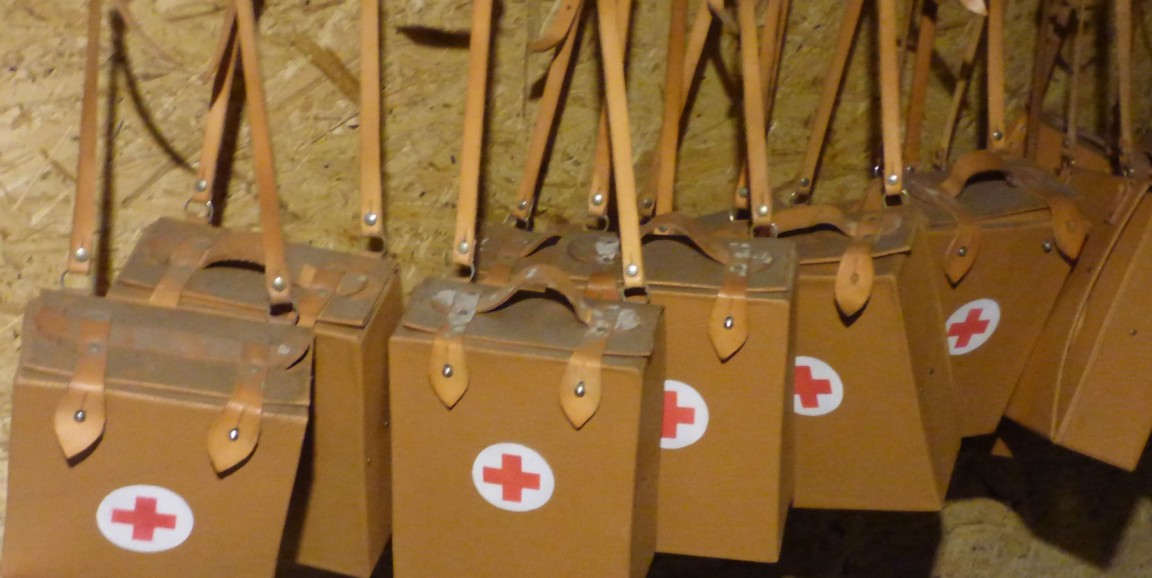Sherry Wren, MD, is haunted by the deaths and injuries of hundreds of thousands of civilians in conflict zones worldwide.
International headlines over the years have spurred the Stanford professor of surgery to think deeply about how patients are cared for in the changing atmosphere of combat; to reach out to colleagues in the military and humanitarian organizations; and to create a plan of action for understanding — and adjusting to — needs of the future.
Her plan’s first phase came to fruition earlier this month. With support from a seed grant from Stanford’s Center for Innovation in Global Health, she convened a summit at Stanford for more than two dozen representatives of major world medical aid organizations. The goal, Wren said, was to design a humanitarian medical response in conflict zones that is capable of averting preventable disability and deaths of civilians by providing modern evidence-based care.
“What do I want? I want the right people responding to the crises and doing the right thing to save the most lives,” she said.
The Battle of Mosul, along with other international emergencies, demonstrated the need to create standards for medical care in conflict conditions, Wren said.
During that nine-month fight against the Islamic State group, the Iraqi government and U.S.-led coalition forces did not provide adequate care for civilians, although it was their responsibility under international humanitarian law, according to an analysis led by the Johns Hopkins Center for Humanitarian Health. For the first time, the World Health Organization took the lead in coordinating trauma care for civilians during conflict. Also for the first time, a for-profit medical company was among the entities tapped to assist, and humanitarian medics joined military divisions near the frontlines.
The unusual situation sparked a reevaluation of principles, responsibilities and ethics in humanitarian medicine. For Wren, it illustrated the importance of establishing competencies for responding organizations — in essence, making sure groups tasked with providing care were capable of handling what they might face.
Attending Wren’s summit via videoconference, Ian Norton, MD, the manager of WHO's emergency medical teams, agreed that good intentions alone are not enough — especially if governments or militaries increasingly outsource civilian care to private companies.
“I absolutely want to work with those organizations to make sure, if they are going to deliver care, it’s of the right standard,” he said.
At the summit, Norton, Stanford Medicine professor Paul Wise, MD, and attendees from Doctors Without Borders, the International Committee of the Red Cross and other groups discussed existing trauma system care and evolving challenges. They spoke about their strengths and what they would change.
“When we went to war, or conflict, in 2003, we didn’t go with tourniquets, and we didn’t go with a trauma system,” said Jennifer Gurney, MD, chief of trauma systems development for the U.S. Department of Defense's Joint Trauma System. “What’s happened over the last decade and a half is we’ve developed a trauma system.”
Drawing from diverse experiences, participants identified essential procedures that responding organizations should be proficient in. The framework spans the continuum of care and includes injury prevention, first response, resuscitation, care fully treating the injury or illness, and restorative care needed for patients to return to their daily lives. It also outlines requirements for collecting, storing and evaluating data about patients and their care.
"I'm really proud," Wren said. "It's a lot to have done in three days."
As a next step, participants will continue the work in teams, fleshing out each section with an eye toward publishing in a journal. Ultimately, Wren hopes the WHO will adopt the standards.
Jesús Manuel Sáenz Tarrazas, MD, said collaboration at the summit was a positive step for the future of humanitarian care.
“This kind of activity is fundamental in order to get a more standardized approach,” said Saenz, surgeon lead for the Americas for the International Committee of the Red Cross. “We need more people working on this. And to have a regular or common framework, we’ll open the door for more people to join the humanitarian activities.”
Photo by Tomasz Mikołajczyk




